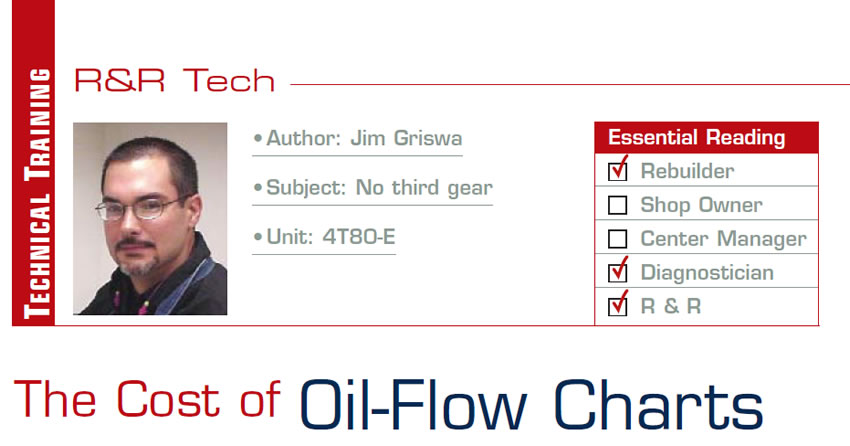A Twist of Fate
Aisin Seiki’s six-speed transmission used in medium-duty trucks is called by various names. It is the AS68RC in Dodge incomplete-chassis packages using L6 6.7-liter diesel engines. It is also called the AS6 in the Mitsubishi Fuso, the M036A6 in Nissan UDs and the A465 in Isuzu NPR trucks.
One of the common failures with this transmission is the stator turning in the pump (figures 1 and 2). A similar problem occurs with Allison 1000/2000 transmissions, in which it causes a TCC overheat and/or C1-clutch failure. You can quickly determine this by pulling the return cooling line. Oil comes out of the case fitting instead of the cooling line.

June 2012 Issue
In This Issue
2006-up Dodge trucks, 545RFE: TCC shudder and/or poor gas mileage
Chrysler/Dodge/Jeep 45/545RFE: front-pump change
Chrysler/Dodge/Jeep NAG 1: garage-shift ringing noise
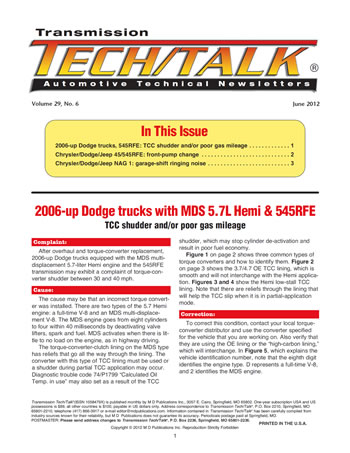
A750E/F, A760E/F/H, A761E
Many times you can make a difficult task much easier by using the correct tool. Removing the B1-accumulator retainer on the A750E/F, A760E/F/H and A761E valve bodies can be very tough.
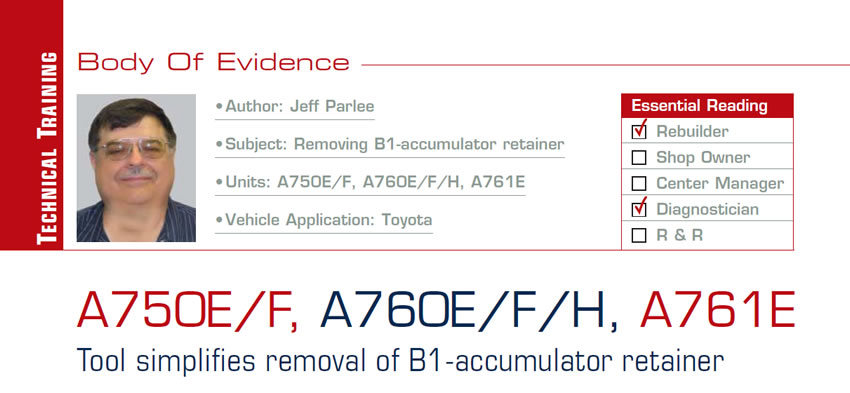
And So It Begins …
Ford Motor Co.’s new 6R140W six-speed transmission has been on the road only since the 2010 model year, and we are already experiencing some problems. This is one of them.
A truck with the 6.7 turbo diesel and 6R140W transmission and a built on or before 4/11/2011 comes in with the malfunction indicator lamp illuminated and a flared 2-3 shift. Other symptoms may include a delayed reverse engagement and a stored fault code P0733 for a third-gear ratio error.
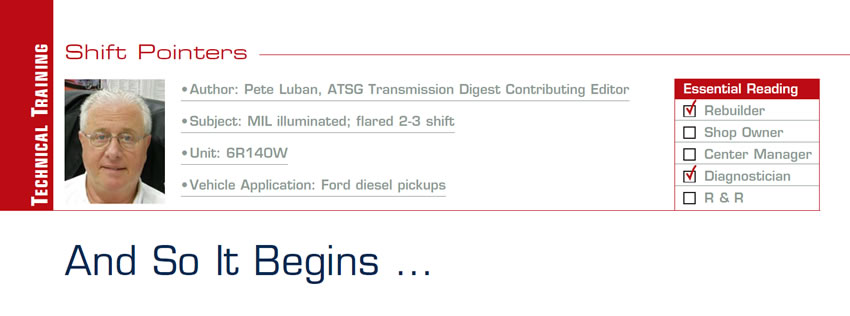
Serviceability Report: Ford Focus Revisited
In the July 2006 issue of AutoInc., I compared the 2006 Focus to the 2000 model. Well, let’s look at the next generation and see if Ford took heed of our suggestions.
Ford had a hit when it introduced the 2000 Ford Focus in 1999; it sold more than 286,000 units the first year. Sales settled down to around 175,000 for the other years, but the 2012 model may change that for the better.
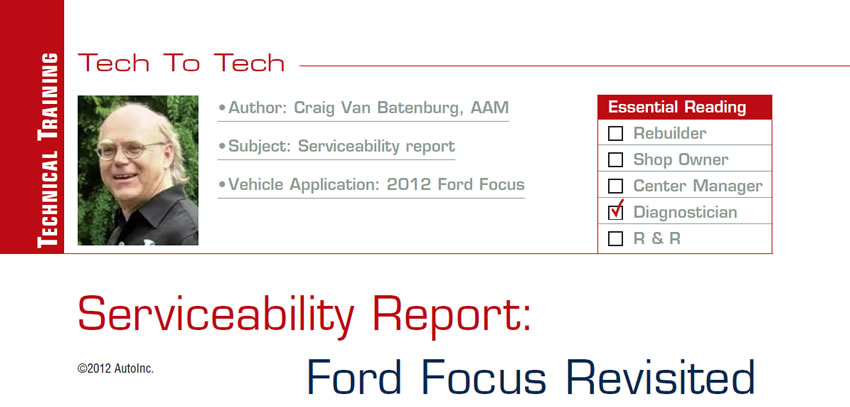
Do You Sell Enough to Keep Your Technicians Busy?
Technicians can play a big part in the sales process, thereby controlling their own destiny to some degree. They can and should be doing an excellent job of checking out each vehicle that comes into their bay no matter why it is initially there. They should make all repair and service recommendations to the service adviser even if they find so many items that it might scare them. The service adviser’s job is to sort them all out, check the vehicle’s history to see what has already been done and decide what the customer really needs now, what can be put off for a little while and what can wait even longer; then he or she has to do a stellar job of selling all those items and giving alternatives only if the customer can’t or is unwilling to have them all done now. The idea is to keep the vehicle on the lift and perform as many repairs and services as possible to save the technician from making unnecessary moves, allowing for maximum productivity.

Tribology
Last month we spoke of some of the design and engineering aspects of gear technology. We will advance this discussion to examine the gear and bearing damage, which we see frequently enough. When you look at damaged gears, shafts, bearings etc. are you confident that you can identify the cause of the damage?
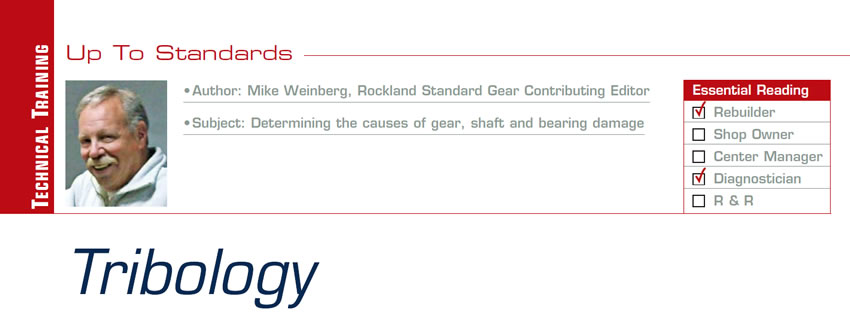
The Cost of Oil-Flow Charts
This story involves a complaint of no third gear on a 4T80-E transaxle. However, the lesson to be learned can be applied to almost all root-cause diagnosis and troubleshooting tasks.
The material for this article involves a unit that was built for our stock inventory and, at the dyno, had no third gear. This would normally lead me to believe that it had a stuck 2-3 shift valve or bad 2-3 shift solenoid. Simply pull the lower pan, swap out the solenoid and the problem should be fixed – or that was my first thought.
